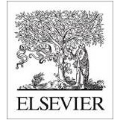Home-assistant robots have been a long-standing research topic, and one of the biggest challenges is searching for required objects in housing environments. Previous object-goal navigation requires the robot to search for a target object category in an unexplored environment, which may not be suitable for home-assistant robots that typically have some level of semantic knowledge of the environment, such as the location of static furniture. In our approach, we leverage this knowledge and the fact that a target object may be located close to its related objects for efficient navigation. To achieve this, we train a graph neural network using the Visual Genome dataset to learn the object co-occurrence relationships and formulate the searching process as iteratively predicting the possible areas where the target object may be located. This approach is entirely zero-shot, meaning it doesn't require new accurate object correlation in the test environment. We empirically show that our method outperforms prior correlational object search algorithms. As our ultimate goal is to build fully autonomous assistant robots for everyday use, we further integrate the task planner for parsing natural language and generating task-completing plans with object navigation to execute human instructions. We demonstrate the effectiveness of our proposed pipeline in both the AI2-THOR simulator and a Stretch robot in a real-world environment.
翻译:居家辅助机器人是一个长期的研究课题, 最大的挑战之一是在居住环境中寻找所需的对象。 先前的客体目标导航要求机器人在未探索的环境中搜索目标对象类别, 这可能不适合家庭辅助机器人, 这些机器人通常对环境具有某种程度的语义知识, 例如静态家具的位置。 在我们的方法中, 我们利用这种知识, 以及目标对象可能位于与其相关对象相近的地方, 以便有效导航。 为了实现这一目标, 我们用视觉基因组数据集来训练一个图形神经网络, 以学习对象的共生关系, 并设计搜索过程, 以迭接地预测目标对象可能所在的可能区域。 这种方法是完全零发的, 意味着它不需要在测试环境中有新的精确对象相关性。 我们的经验显示, 我们的方法超越了先前的相关对象搜索算法。 由于我们的最终目标是为日常使用建立完全自主的辅助机器人, 我们进一步整合任务规划器, 以辨别自然语言, 并生成任务拼凑任务计划, 以迭接方式预测目标对象可能所在的区域。 这个方法完全为零, 意味着它不需要在测试环境中执行我们提议的路径导航系统。</s>




